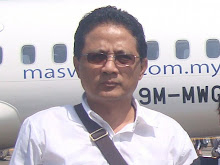The Jakarta Post | Fri, 11/18/2011 8:50 AM A | A | A | - Klipping The Jakarta Post
The Indonesian government’s outright rejection of US President Barack Obama’s invitation to join trade negotiations for a Trans-Pacific Partnership (TPP), a new regional free trade arrangement slated to be launched later next year, has been largely anticipated, given the strong opposition the partnership has faced from China and Japan.
Trade Minister Gita Wirjawan was quite right when he asserted early this week that Indonesia’s manufacturing companies were not yet ready for such global competition.
Both the government and the private sector indeed still have a lot of homework to do before plunging head-on into global market competition.
We are by no means opposed to open, free and fair market competition, but our industries, still grappling with several disadvantages inherent within our economy, such as the highest lending rate and logistics costs in the region, need some time to strengthen their competitiveness before entering the global arena.
While four ASEAN members — Brunei Darussalam, Malaysia, Singapore and Vietnam — and Australia, Chile, Peru and New Zealand have joined the US-initiated TPP negotiations, it is strategically better for Indonesian interests to focus on the preparations for the fully fledged implementation of the ASEAN free trade and economic community in 2015.
We are aware of the frustrations of several ASEAN member states at the utterly slow progress on the ASEAN free trade arrangements, but ASEAN and the rest of Asia should remain the focus of our attention because it is in this region where growth remains robust now and for the foreseeable future.
As the chair of the ASEAN regional grouping this year, Indonesia is called upon to strengthen the grouping’s unity and resolve to achieve a fully integrated market in 2015, since only with such a single market can we have a stronger advantage to attract investment and develop ASEAN into an efficient production base as part of the global supply chain.
The blueprint for an ASEAN Economic Community (AEC) charts the path to make the region, with a total population of 600 million people and gross domestic product of about US$1.8 trillion, a single market and production base.
But we often confuse a single market simply with low or zero tariffs. True, zero tariffs have been achieved for 99.85 percent of traded goods within ASEAN, but the concept of a single market and integrated economy requires more than just the removal of tariffs. All non-tariff barriers to trade should also be lifted to facilitate the free trade of goods and services among member states.
In fact, the removal of such non-tariff barriers such as technical and safety standards, different customs-clearance procedures, transit transport systems, rules of origin and conformity assessment practices are most difficult and complex, requiring institutional-capacity building in each country.
Three years is not long for the full market integration given the widely differing levels of technical competence of officials involved in facilitating the integration process.
Zero import tariffs would be made virtually meaningless in stimulating intra-ASEAN trade if the non-tariff barriers are not resolved, because different standards and assessment practices and different product registration and labeling rules require duplicate testing for quality certification, increasing distribution costs.
ASEAN leaders need to review the progress already made in the removal of non-tariff barriers to trade and whenever necessary agree on additional bold measures to ensure that ASEAN free trade and the ASEAN economic community are up and running in 2015, as scheduled.
Subscribe to:
Post Comments (Atom)

No comments:
Post a Comment